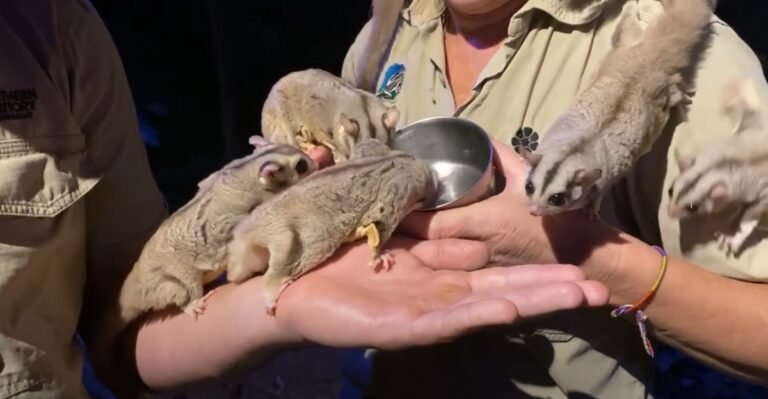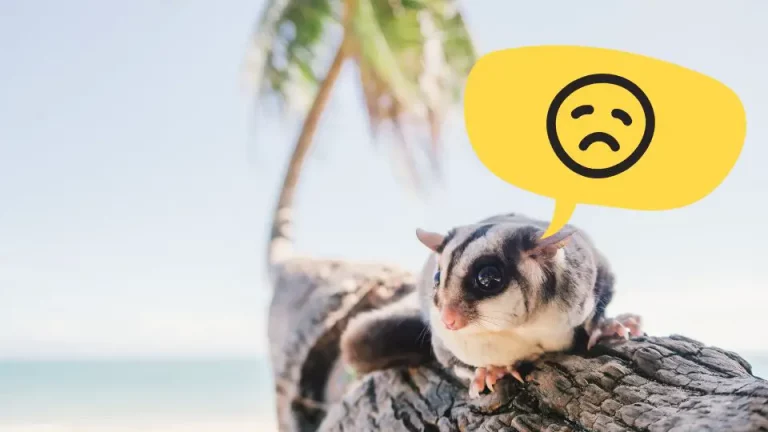How Big Does A Sugar Glider
Sugar gliders are small, adorable creatures that have gained popularity as exotic pets in recent years. Native to Australia, New Guinea, and Indonesia, these marsupials have unique characteristics that make them fascinating to observe and care for. One commonly asked question among potential sugar glider owners is “how big do sugar gliders grow?” In this article, we will dive into the physical size of sugar gliders, their growth patterns, and other related information to help you understand these lovely creatures better.
Sugar Glider Size: Explained in Detail
Sugar gliders are relatively small animals, but their size can vary depending on factors such as genetics, diet, and overall health. On average, adult sugar gliders measure between 11 to 12 inches from the tip of their nose to the end of their tail. However, it’s important to note that the tail itself makes up a significant portion of their length, accounting for around 8 to 9 inches.
Sugar gliders typically weigh between 3.5 to 5 ounces. Males tend to be slightly larger and heavier than females, although the difference is not significant. Their bodies are designed for agility, with a slender build and a membrane called a patagium that stretches between their front and hind limbs, enabling them to glide through the air gracefully.
Growth Patterns of Sugar Gliders
When sugar gliders are born, they are just tiny, pink, hairless creatures called joeys. At birth, joeys weigh around 0.2 grams and are about the size of a grain of rice. They spend their earliest days nestled securely in their mother’s pouch, where they continue to develop externally.
Around 70 days after birth, joeys start to emerge from the pouch and explore their surroundings. At this stage, they are called “out of pouch” joeys. Out of pouch joeys are still dependent on their mother for milk and protection but are beginning to develop more physically. They start growing fur and their eyes open, revealing their adorable, beady-eyed faces.

Over the next few months, sugar gliders experience rapid growth. By six months of age, they reach sexual maturity and are considered adults. However, it’s important to note that sugar gliders may continue to grow in size and weight until they’re around 1 to 1.5 years old.
Factors Affecting Sugar Glider Size
While sugar gliders generally fall within a certain size range, there can be variations even among individuals of the same age. Some factors that may influence the size of a sugar glider include:
1. Genetics: Just like with other animals, the genes passed down from their parents can influence a sugar glider’s overall physical characteristics, including size.
2. Nutrition: A well-balanced diet is crucial for the healthy growth and development of sugar gliders. Nutritional deficiencies or an improper diet can stunt their growth and affect their overall size.
3. Environment: The living environment of a sugar glider can also impact its growth. A suitable habitat with ample space for climbing, playing, and exercise can contribute to optimal growth and development.
4. Health and Care: Sugar gliders that receive proper veterinary care, regular check-ups, and a clean, stimulating environment tend to grow healthier and potentially reach their full size.
Frequently Asked Questions
Q: How long do sugar gliders live?
Sugar gliders have a lifespan of around 10 to 15 years in captivity when provided with proper care and nutrition. In the wild, their lifespan is shorter due to various environmental factors and natural predators.
Q: Are male sugar gliders bigger than females?
While male sugar gliders may be slightly larger and heavier than females, the difference in size is not significant. Both genders have similar body structures and exhibit similar gliding abilities.
Q: Do sugar gliders really glide?
Yes, sugar gliders are unique for their gliding abilities. They can glide through the air by extending their patagium, a skin membrane that stretches from their wrists to their ankles. They use their tail as a rudder, allowing them to change direction during flight.
Q: How can I ensure my sugar glider grows to its full potential?
Providing a balanced diet consisting of fresh fruits, vegetables, protein, and a commercial pellet formulated specifically for sugar gliders is essential for their growth. Creating a stimulating environment with plenty of opportunities for exercise and social interaction is also crucial.
Final Thoughts
Sugar gliders are charming creatures that captivate many with their small size and remarkable gliding abilities. While they may not grow as large as some other pets, their petite stature adds to their charm. Understanding the growth patterns and size ranges of sugar gliders can help potential owners ensure they provide the best care possible for these delightful little marsupials. Whether you’re considering adding a sugar glider to your family or simply curious about these fascinating animals, keep in mind that they require special care, attention, and a suitable environment to thrive happily and grow to their full potential.







